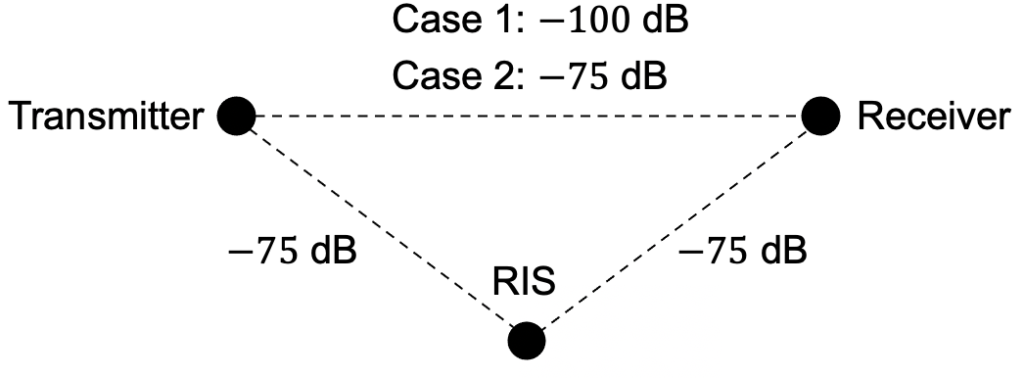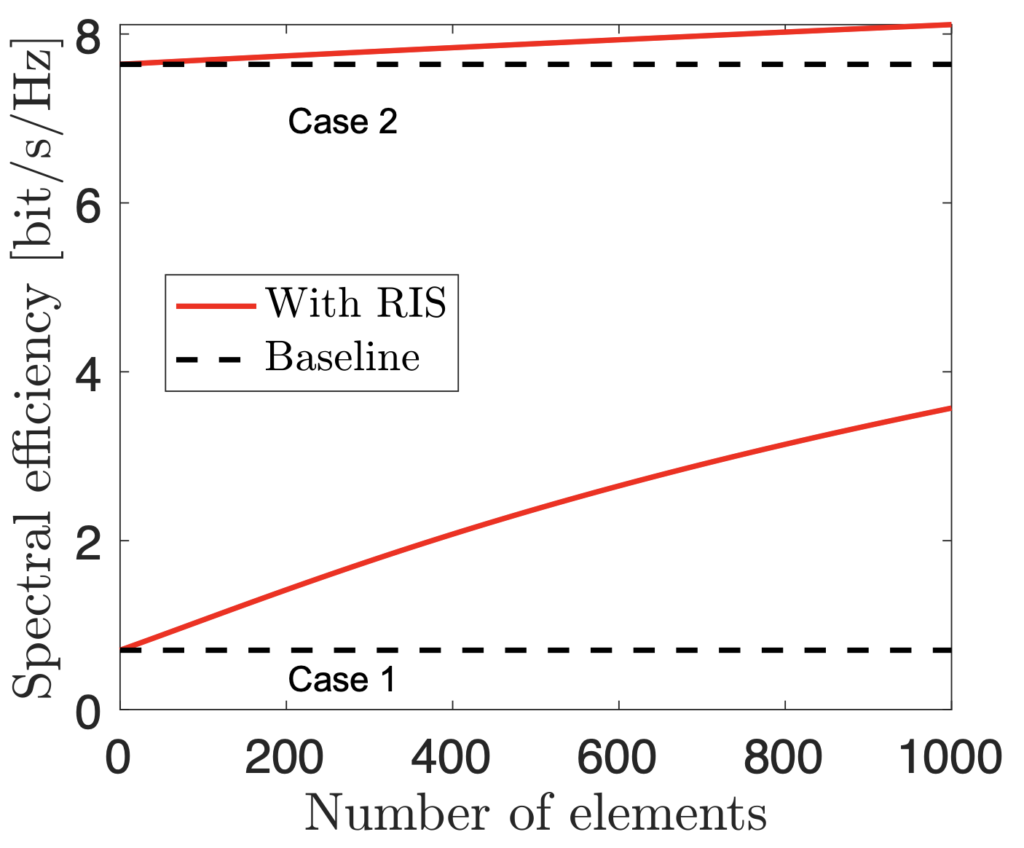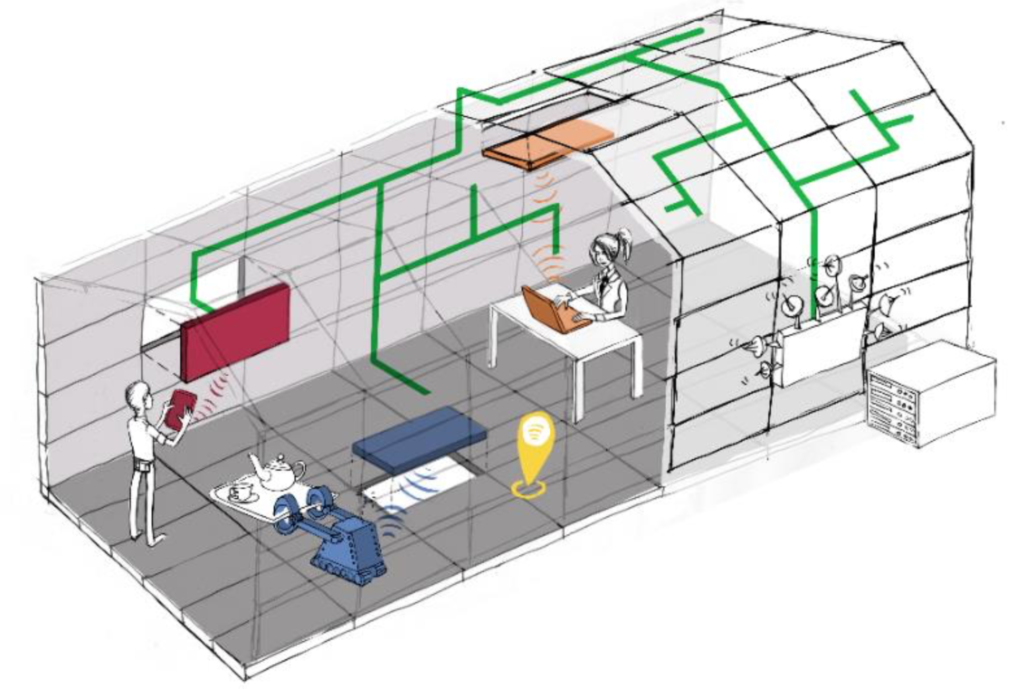If you have followed my publications on reconfigurable intelligent surfaces (RIS), also known as intelligent reflecting surfaces, you might have noticed that many of them are focusing on drawbacks that were generally overlooked when the papers were written. It could be the lack of comparison with state-of-the-art relays, the misuse of pathloss formulas designed for specular reflectors, asymptotic arguments building on formulas that break down asymptotically, the use of physically impossible channel models, or how cumbersome channel estimation generally is. However, this doesn’t mean that I’m skeptical of the technology as such. The more I have analyzed the RIS technology, the clearer it has become that there is one scenario where it works very well. In this blog post, I will explain the two criteria that must be satisfied.
Criterion 1: The direct path must be weak
Consider the following simulation example, where the respective path losses are indicated:

Case 1 represents a weak direct path and Case 2 represents a direct path that is of the same strength as the paths to/from the RIS. When adding more and more elements in the RIS, the spectral efficiency behaves as follows (“baseline” is the case without RIS):

The RIS can improve the performance by a lot in Case 1 (weak direct channel), while the improvements are mediocre in Case 2 (stronger direct channel). (You can download the simulation code here.) Hence, we should utilize an RIS to improve the SNR when the channel quality is otherwise low. This might not be so surprising but it means that we must deploy the RIS strategically to get good channels both to and from it.
Criterion 2: Line-of-sight channels to and from the RIS
A more subtle point is that we should deploy the RIS to have line-of-sight channels to the transmitter and the receiver. There are three main reasons for this:
- Criterion 1 is likely to be satisfied, at least if the direct path is non-line-of-sight.
- The RIS can be used over wideband channels (e.g., tens of MHz) since most of the energy comes from one angular direction and should be delivered in one angular direction.
- The channel estimation can be vastly simplified by exploiting angular sparsity.
The following paper contains recent experimental results that demonstrate the feasibility of the RIS technology: “RIS-Aided Wireless Communications: Prototyping, Adaptive Beamforming, and Indoor/Outdoor Field Trials“. The paper describes outdoor field trials over 50 and 500 meters in scenarios satisfying the two conditions above. The paper proposes an algorithm for RIS configuration that is explicitly utilizing the angular channel sparsity and provided large SNR improvements.
I talk more about these measurements and underlying theory in the following video (which is also based on my new tutorial article):


